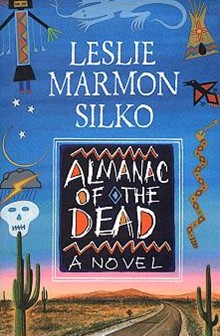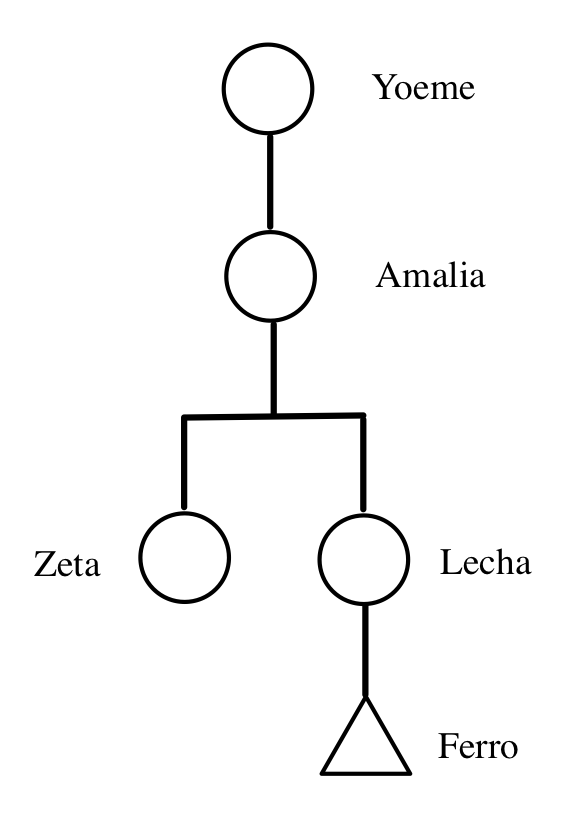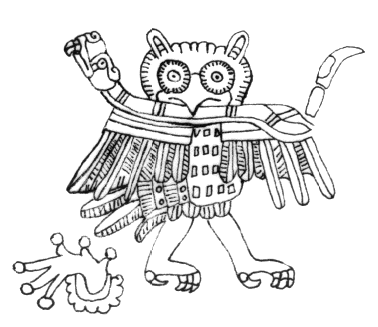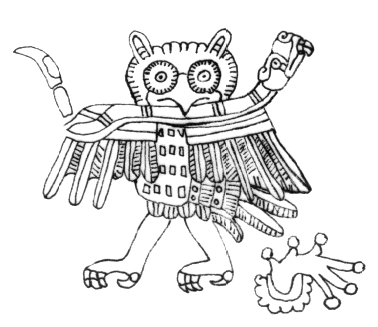レスリー・マーモン・シルコウ
Leslie Marmon Silko, b.1948
Leslie Marmon Silko Saw It Coming, by New Yorker / Front cover of the Almanac of the Dead /
レスリー・マーモン・シルコウ
Leslie Marmon Silko, b.1948
Leslie Marmon Silko Saw It Coming, by New Yorker / Front cover of the Almanac of the Dead /
★レスリー・マーモン・シルコ(Leslie Marmon Silko、1948年3月5日生まれ)はアメリカの作家である。ラグナ・プエブロの血を引く女性で、文芸評論家ケネス・リンカーンが「ネイティブ・アメ リカン・ルネッサンス」と呼ぶ第一波の中心人物のひとりである。 1981年にマッカーサー財団の助成金を受賞し、1994年にはアメリカ先住民作家サークル生涯功労賞[1]、2020年にはロバート・カーシュ賞を受賞 した[2]。
| Leslie Marmon Silko
(born Leslie Marmon; born March 5, 1948) is an American writer. A woman
of Laguna Pueblo descent, she is one of the key figures in the First
Wave of what literary critic Kenneth Lincoln has called the Native
American Renaissance. Silko was a debut recipient of the MacArthur Foundation Grant in 1981, the Native Writers' Circle of the Americas Lifetime Achievement Award in 1994[1] and the Robert Kirsch Award in 2020.[2] She currently resides in Tucson, Arizona. |
レスリー・マーモン・シルコ(Leslie Marmon
Silko、1948年3月5日生まれ)はアメリカの作家である。ラグナ・プエブロの血を引く女性で、文芸評論家ケネス・リンカーンが「ネイティブ・アメ
リカン・ルネッサンス」と呼ぶ第一波の中心人物のひとりである。 1981年にマッカーサー財団の助成金を受賞し、1994年にはアメリカ先住民作家サークル生涯功労賞[1]、2020年にはロバート・カーシュ賞を受賞 した[2]。 |
| Early life This section of a biography of a living person needs additional citations for verification. Please help by adding reliable sources. Contentious material about living persons that is unsourced or poorly sourced must be removed immediately from the article and its talk page, especially if potentially libelous. Find sources: "Leslie Marmon Silko" – news · newspapers · books · scholar · JSTOR (December 2022) (Learn how and when to remove this message) Leslie Marmon Silko was born in Albuquerque, New Mexico to Leland Howard Marmon, a noted photographer, and Mary Virginia Leslie, a teacher, and grew up on the Laguna Pueblo reservation.[3] Her mixed-race family was of white American, Native American, and Mexican descent. She wrote that her paternal grandmother, who was born in Montana, had a father whose family was "part Plains Indian" but that her grandmother "never knew" which tribe she was descended from, and that her grandmother's father was "half German" with an "Indian" mother. She also wrote that her maternal grandmother was part Cherokee "through her Grandfather Wood" who was from Kentucky.[4] Silko grew up on the edge of Laguna Pueblo society both literally – her family's house was at the edge of the Laguna Pueblo reservation – but was not able to participate in some of the rituals because of the distance of their home.[5] Her father's Laguna blood quantum was one-quarter and hers is one-eighth; the Laguna Pueblo blood quantum requirement for regular membership is one-quarter. She is not an enrolled citizen of the Laguna Pueblo.[6][7] Calling herself a "mixed-breed", she had said that a sense of community is more important to Native identity than blood quantum: "That's where a person's identity has to come from, not from racial blood quantum levels."[8] She has described her Marmon family history as "very controversial, even now." She is of Laguna descent through her great-grandfather, a Laguna woman named Maria Anaya/Analla, who was married to a white settler named Robert Gunn Marmon. According to Silko, the core theme of her writing is an attempt to make sense of what it means to be "neither white nor fully traditionally Indian." She identifies culturally as a Laguna woman, but does not claim to be representative of Native voices.[9] While her parents worked, Silko and her two sisters were cared for by their grandmother, Lillie Stagner, and great-grandmother, Helen Romero, both story-tellers.[10] Silko learned much of the traditional stories of the Laguna people from her grandmother, whom she called A'mooh, her aunt Susie, and her grandfather Hank during her early years. As a result, Silko has always identified most strongly with her Laguna heritage, stating in an interview with Alan Velie, "I am of mixed-breed ancestry, but what I know is Laguna".[11] Silko's education included preschool through the fifth grade at Laguna BIA (Bureau of Indian Affairs) School and followed by a Catholic school, the latter meant a day's drive by her father of 100 miles to avoid the boarding-school experience. [12] Silko went on to receive a BA in English Literature from the University of New Mexico in 1969; she briefly attended the University of New Mexico law school before pursuing her literary career full-time. |
生い立ち 存命中の人物の伝記のこのセクションは、検証のための追加引用が必要で ある。信頼できる情報源の追加にご協力いただきたい。特に誹謗中傷の可能性がある場合は、ソースがない、またはソースが不十分な存命中の人格に関する論争 資料は、記事とそのトークページから直ちに削除されなければならない。 出典を探す 「Leslie Marmon Silko" - news - newspapers - books - scholar - JSTOR (December 2022) (Learn how and when to remove this message) レスリー・マーモン・シルコはニューメキシコ州アルバカーキで、著名な写真家であったリーランド・ハワード・マーモンと教師であったメアリー・ヴァージニ ア・レスリーの間に生まれ、ラグナ・プエブロ保留地で育った[3]。白人、ネイティブ・アメリカン、メキシコ系の混血の家族であった。彼女は、モンタナで 生まれた父方の祖母の父親は「一部プレーンズ・インディアン」であったが、祖母は自分がどの部族の子孫であるか「知らなかった」と書いており、祖母の父親 は「インディアン」の母親を持つ「ドイツ人とのハーフ」であったと書いている。彼女はまた、母方の祖母はケンタッキー出身の「ウッド祖父を通じて」チェロ キー族の一員であったとも書いている[4]。 彼女の実家はラグナプエブロ居留地の端にあり、文字通りラグナプエブロ社会の端で育ったが、家が遠かったため儀礼のいくつかに参加することはできなかった [5]。彼女の父親のラグナの血統は4分の1で、彼女の血統は8分の1である。彼女はラグナプエブロの登録市民ではない。[6][7] 自身を「混血のミヘ」と呼ぶ彼女は、ネイティブのアイデンティティには血の量よりも共同体意識が重要だと語っていた: 「そこが人格の源であるべきで、人種的な血量ではない」[8]と述べている。彼女は、マリア・アナヤ/アナラというラグナ族の女性で、ロバート・ガン・ マーモンという白人入植者と結婚した曽祖父を通してラグナ族の血を引いている。シルコによれば、彼女の執筆の中心テーマは、「白人でもなく、完全に伝統的 なインディアンでもない 」ということの意味を理解しようとする試みである。彼女は文化的にはラグナ族の女性であるが、ネイティブの声を代表しているとは主張していない[9]。 両親が働いている間、シルコと2人の姉妹は祖母のリリー・スタグナーと曾祖母のヘレン・ロメロに世話をしてもらったが、2人とも語り部であった[10]。 その結果、シルコは常にラグナの伝統を最も強く意識し、アラン・ヴェリーとのインタビューで「私は混血の先祖を持つが、私が知っているのはラグナだ」と述 べている[11]。 シルコの教育は、プリスクールから5年生までラグナBIA(インディアン局)スクールに通い、その後はカトリックの学校に通った。[12]シルコは 1969年にニューメキシコ大学で英文学の学士号を取得し、文学活動を本格的に始める前にニューメキシコ大学の法学部に短期間通った。 |
| Early literary work Silko garnered early literary acclaim for her short story "The Man to Send Rain Clouds," which was awarded a National Endowment for the Humanities Discovery Grant. The story continues to be included in anthologies. During the years 1968 to 1974, Silko wrote and published many short stories and poems that were featured in her Laguna Woman (1974). Her other publications, include: Laguna Woman: Poems (1974), Ceremony (1977), Storyteller (1981), and, with the poet James A. Wright, With the Delicacy and Strength of Lace: Letters Between Leslie Marmon Silko and James Wright (1985). Almanac of the Dead, a novel, appeared in 1991, and a collection of essays, Yellow Woman and a Beauty of the Spirit: Essays on Native American Life Today, was published in 1996.[13] Silko wrote a screenplay based on the comic book Honkytonk Sue, in collaboration with novelist Larry McMurtry, which has not been produced.[14] |
初期の文学作品 シルコは「雨雲を送る男」という短編小説で早くから文学的評価を得ており、ナショナリズムの発掘助成金を国民基金から授与された。この短編は現在もアンソロジーに収録されている。 1968年から1974年にかけて、シルコは多くの短編小説や詩を執筆・出版し、それらは『Laguna Woman』(1974年)に収録されている。 彼女の他の出版物には以下のものがある: Laguna Woman: 詩集『Laguna Woman: Poems』(1974年)、『Ceremony』(1977年)、『Storyteller』(1981年)、詩人ジェームス・A・ライトとの共著 『With the Delicacy and Strength of Lace』などがある: Letters Between Leslie Marmon Silko and James Wright』(1985年)がある。1991年には小説『Almanac of the Dead』、エッセイ集『Yellow Woman and a Beauty of the Spirit』が出版された: 1996年にはエッセイ集『Yellow Woman and a Beauty of the Spirit: Essays on Native American Life Today』が出版された[13]。 シルコは小説家ラリー・マクマートリーと共同でコミック『Honkytonk Sue』を基にした脚本を書いたが、これは製作されていない[14]。 |
| Literary relevance and themes Throughout her career as a writer and teacher, she has remained grounded in the history-filled landscape of the Laguna Pueblo. Her experiences in the culture have fueled an interest to preserve cultural traditions and understand the impact of the past on contemporary life. A well-known novelist and poet, Silko's career has been characterized by making people aware of ingrained racism and white cultural imperialism, and a commitment to support women's issues.[15] Her novels have many characters who attempt what some perceive a simple yet uneasy return to balance Native American traditions survivalism with the violence of modern America. The clash of civilizations is a continuing theme in the modern Southwest and of the difficult search for balance that the region's inhabitants encounter.[13] Her literary contributions are particularly important[16] because they open up the Anglo-European prevailing definitions of the American literary tradition to accommodate the often underrepresented traditions, priorities, and ideas about identity that in a general way characterize many American Indian cultures and in a more specific way form the bedrock of Silko's Laguna heritage and experience. During an interview in Germany in 1995, Silko shared the significance of her writings as a continuation of an existing oral tradition within the Laguna people. She specified that her works are not re-interpretations of old legends, but carry the same important messages as when they were told hundreds of years ago. Silko explains that the Laguna view on the passage of time is responsible for this condition, stating, “The Pueblo people and the indigenous people of the Americas see time as round, not as a long linear string. If time is round, if time is an ocean, then something that happened 500 years ago may be quite immediate and real, whereas something inconsequential that happened an hour ago could be far away.”[17] |
文学的関連性とテーマ 作家として、また教師としてのキャリアを通して、彼女はラグーナ・プエブロの歴史に満ちた風景に根ざし続けてきた。この文化での経験が、文化的伝統を守 り、過去が現代の生活に与える影響を理解することへの関心を高めてきた。有名な小説家であり詩人であるシルコのキャリアは、根付いた人種差別と白人文化帝 国主義を人々に認識させること、そして女性問題の支援に尽力することを特徴としている[15]。彼女の小説には、ネイティブ・アメリカンの伝統的な生存主 義と現代アメリカの暴力性のバランスを取るために、単純だが不安な復帰を試みる多くの登場人物が登場する。文明の衝突は現代の南西部における継続的なテー マであり、この地域の住民が遭遇するバランスを求める困難な探求のテーマである[13]。 彼女の文学的貢献は特に重要であり[16]、その理由は、アメリカ文学の伝統に関するアングロ・ヨーロッパの一般的な定義を開放し、多くのアメリカ・イン ディアン文化を一般的な意味で特徴づけ、より個別主義的な意味でシルコのラグナの伝統と経験の基盤を形成している、しばしば過小評価されがちな伝統、優先 事項、アイデンティティに関する考え方を受け入れることにあるからである。 1995年にドイツで行われたインタビューで、シルコはラグナ人民の口承の伝統を受け継ぐものとして、自分の著作の意義を語った。彼女の作品は古い伝説の 再解釈ではなく、何百年も前に語られたのと同じ重要なメッセージを伝えるものだと彼女は明言した。プエブロの人々やアメリカ大陸の先住民は、時間を長い直 線的な糸としてではなく、丸いものとして見ている。プエブロの人々やアメリカ大陸の先住民は、時間を長い直線的なひもとしてではなく、丸いものとして捉え ている。もし時間が丸いものであり、時間が海であるならば、500年前に起こったことは、ごく身近で現実的なことかもしれないが、1時間前に起こった取る に足らないことは、はるか彼方のことかもしれない」[17]。 |
| Ceremony Main article: Ceremony (Silko novel) Leslie Marmon Silko's novel Ceremony was first published by Penguin in March 1977 to much critical acclaim. The novel tells the story of Tayo, a wounded returning World War II veteran of mixed Laguna-white ancestry following a short stint at a Los Angeles VA hospital. He is returning to the poverty-stricken Laguna reservation, continuing to suffer from "battle fatigue" (shell-shock), and is haunted by memories of his cousin Rocky who died in the conflict during the Bataan Death March of 1942. His initial escape from pain leads him to alcoholism, but his Old Grandma and mixed-blood Navajo medicine-man Betonie help him through Native ceremonies to develop a greater understanding of the world and his place as a Laguna man. Ceremony has been called a Grail fiction, wherein the hero overcomes a series of challenges to reach a specified goal; but this point of view has been criticized as Eurocentric, since it involves a Native American contextualizing backdrop, and not one based on European-American myths. Silko's writing skill in the novel is deeply rooted in the use of storytelling that pass on traditions and understanding from the old to the new. Fellow Pueblo poet Paula Gunn Allen criticized the book on this account, saying that Silko was divulging secret tribal knowledge reserved for the tribe, not outsiders.[18] Ceremony gained immediate and long-term acceptance when returning Vietnam War veterans took to the novel's theme of coping, healing and reconciliation between races and people that share the trauma of military actions. It was largely on the strength of this work that critic Alan Velie named Silko one of his Four Native American Literary Masters, along with N. Scott Momaday, Gerald Vizenor and James Welch. Ceremony remains a literary work featured on college and university syllabi, and one of the few individual works by any author of Native American heritage to have received book-length critical inquiry. |
セレモニー 主な記事 セレモニー(シルコの小説) レスリー・マーモン・シルコの小説『セレモニー』は1977年3月にペンギン社から出版され、高い評価を得た。 この小説は、第二次世界大戦で負傷し、ロサンゼルスのバージニア病院に短期間入院した後、ラグナと白人の混血の先祖を持つ帰還兵タイヨの物語である。彼は 貧困にあえぐラグナ居留地に戻り、「戦闘疲労」(砲弾ショック)に苦悩し続け、1942年のバターン死の行進で戦死した従兄弟ロッキーの思い出に悩まされ る。痛みから逃れるためにアルコール依存症に陥るが、オールド・おばあちゃんと混血のナバホ族の医学者ベトニーが、先住民の儀式を通して世界とラグナ人と しての自分の立場をより深く理解する手助けをする。 『セレモニー』は、主人公が一連の試練を乗り越えて特定のゴールに到達する聖杯小説(a Grail fiction) と呼ばれているが、この視点はヨーロッパ・アメリカの神話に基づくものではなく、ネイティブ・アメリカンの文脈を背景にしているため、ヨーロッパ中心主義 的だと批判されている。この小説におけるシルコの筆力は、古いものから新しいものへと伝統と理解を伝えるストーリーテリングに深く根ざしている。プエブロ の詩人仲間であるポーラ・ガン・アレンは、シルコは部外者ではなく部族のためにとっておいた部族の秘密の知識を漏らしているのだと言って、この本を批判し た[18]。 『セレモニー』は、ベトナム戦争帰還兵がこの小説のテーマである、軍事行動によるトラウマを共有する人種や人民の間の対処、癒し、和解に賛同したことで、 すぐに、そして長期的に受け入れられるようになった。批評家アラン・ヴェリーが、N・スコット・モマデイ、ジェラルド・ヴィゼナー、ジェイムズ・ウェルチ とともに「4人のネイティブ・アメリカン文学の巨匠」のひとりにシルコを選んだのは、この作品の力によるところが大きい。 『セレモニー』は現在でも大学のシラバスで取り上げられる文学作品であり、ネイティブ・アメリカンの血を引く作家の作品としては数少ない、書籍化された批評家による批評を受けた作品のひとつである。 |
| 1980s Storyteller In 1981, Silko released Storyteller, a collection of poems and short stories that incorporated creative writing, mythology, and autobiography, which garnered favorable reception as it followed in much the same poetic form as the novel Ceremony. Delicacy and Strength of Lace In 1986, Delicacy and Strength of Lace was released. The book is a collected volume of correspondence between Silko and her friend James Wright whom she met following the publication of Ceremony. The work was edited by Wright's wife, Ann Wright, and released after Wright's death in March 1980. |
1980s ストーリーテラー 1981年、シルコは創作、神話、自伝を盛り込んだ詩と短編の作品集『Storyteller』を発表し、小説『Ceremony』とほぼ同じ詩的形式を踏襲した作品として好評を博した。 繊細さとレースの強さ 1986年、『レースの繊細さと強さ』が発表された。この本は、『セレモニー』の出版後に知り合った友人ジェームズ・ライトとシルコの往復書簡集である。ライトの妻アン・ライトが編集し、1980年3月のライトの死後に発売された。 |
| 1990s Almanac of the Dead The novel Almanac of the Dead was published in 1991. This work took Silko ten years to complete and received mixed reviews. The vision of the book stretches over both American continents and includes the Zapatista Army of National Liberation revolutionaries, based in the southern Mexican state of Chiapas, as just one group among a pantheon of characters. The theme of the novel, like that of Ceremony, focuses on the conflict between Anglo-Americans and Native Americans. Several literary critics have been critical of the novel's depiction of homosexuality, based on the fact that the novel features male gay and bisexual characters who are variously abusive, sadistic, and cruel.[19] Almanac of the Dead has not achieved the same mainstream success as its predecessor. |
1990年代 死者の年鑑 小説『死者の年鑑』は 1991 年に出版されました。この作品は、シルコが 10 年の歳月をかけて完成させたもので、批評は混血の反応でした。この小説の舞台は南北アメリカ大陸に及び、メキシコ南部のチアパス州を拠点とするサパティス タ民族解放軍も、登場人物の一群にすぎません。この小説のテーマは、『セレモニー』と同様、アングロ・アメリカ人とネイティブ・アメリカンの対立に焦点を 当てている。 いくつかの文学評論家は、この小説に、虐待的、サディスティック、残酷な男性同性愛者やバイセクシュアルの登場人物が登場することから、同性愛者の描写について批判している。[19] 『死者の年鑑』は、前作のような主流の成功を収めることはできなかった。 |
| Sacred Water In June 1993, Silko published a limited run of Sacred Water under Flood Plain Press, a self-printing venture by Silko. Each copy of Sacred Water is handmade by Silko using her personal typewriter combining written text set next to poignant photographs taken by the author. Sacred Water is composed of autobiographical prose, poetry and pueblo mythology focusing on the importance and centrality of water to life. Silko issued a second printing of Sacred Water in 1994 in order to make the work more accessible to students and academics although it was limited. This edition used printing methods suited for a greater production distribution. |
聖なる水 1993年6月、シルコは、自身の自費出版レーベル「Flood Plain Press」から『Sacred Water』を限定版で出版した。『Sacred Water』は、シルコが自分のタイプライターを使って、彼女が撮影した感動的な写真と文章を組み合わせて、1冊ずつ手作業で制作したものだ。 『Sacred Water』は、生命にとって水が持つ重要性と中心性について、自伝的な散文、詩、プエブロの神話で構成されている。 シルコは1994年に『聖なる水』の第二版を発行し、学生や研究者に作品をより広くアクセス可能にするため、限定版ながら再版した。この版では、より大規模な印刷配布に適した印刷方法が採用された。 |
| Yellow Woman and a Beauty of the Spirit: Essays on Native American Life Today Yellow Woman and a Beauty of the Spirit: Essays on Native American Life Today was published by Simon & Schuster in March 1997. The work is a collection of essays on various topics; including an autobiographical essay of her childhood at Laguna Pueblo and the racism she faced as a mixed blood person; stark criticism directed at President Bill Clinton regarding his immigration policies; and praise for the development of and lamentation for the loss of the Aztec and Maya codices, along with commentary on Pueblo mythology. As one reviewer notes, Silko's essays "encompass traditional storytelling, discussions of the power of words to the Pueblo, reminiscences on photography, frightening tales of the U.S. border patrol, historical explanations of the Mayan codices, and socio-political commentary on the relationship of the U.S. government to various nations, including the Pueblo".[20] The essay "Yellow Woman" concerns a young woman who becomes romantically and emotionally involved with her kidnapper, despite having a husband and children. The story is related to the traditional Laguna legend/myth of the Yellow Woman. |
『イエロー・ウーマンと精神の美:現代のネイティブ・アメリカン生活に関するエッセイ集』 『イエロー・ウーマンと精神の美:現代のネイティブ・アメリカン生活に関するエッセイ集』は、1997年3月にサイモン&シュスター社から出版された。 この作品は、ラグナ・プエブロでの幼少期、混血の人格として直面した人種主義について書いた自伝的エッセイ、ビル・クリントン大統領の移民政策に対する厳 しい批判、アステカとマヤのコデックス(古文書)の保存と失われたものの喪失に対する賛辞、プエブロの神話に関する解説など、さまざまなトピックに関する エッセイを収録した作品集だ。 ある批評家は、シルコのエッセイは「伝統的な物語、プエブロ族にとっての言葉の力についての考察、写真に関する回想、米国国境警備隊の恐ろしい話、マヤの コデックスに関する歴史的説明、プエブロ族を含むさまざまな国民と米国政府の関係に関する社会政治的な解説」などを網羅していると評している。[20] エッセイ「イエロー・ウーマン」は、夫と子供がいるにもかかわらず、誘拐犯と恋愛関係に陥る若い女性を描いた作品だ。この物語は、ラグナ族の伝統的な伝説/神話「イエロー・ウーマン」に関連している。 |
| Rain In 1997, Silko ran a limited number of handmade books through Flood Plain Press. Like Sacred Water, Rain was again a combination of short autobiographical prose and poetry inset with her photographs. The short volume focused on the importance of rain to personal and spiritual survival in the Southwest. Gardens In The Dunes Gardens in the Dunes was published in 1999. The work weaves together themes of feminism, slavery, conquest and botany, while following the story of a young girl named Indigo from the fictional "Sand Lizard People" in the Arizona Territory and her European travels as a summer companion to an affluent White woman named Hattie. The story is set against the back drop of the enforcement of Indian boarding schools, the California Gold Rush and the rise of the Ghost Dance Religion. |
雨 1997年、シルコはフラッド・プレイン・プレスから限定数の手作りの本を出版した。『聖なる水』と同様、『雨』も、彼女の写真と、自伝的な短編散文や詩を組み合わせた作品だ。 この短編は、南西部における個人的、そして精神的な生存にとって雨が持つ重要性に焦点を当てたものだ。 砂丘の庭 『砂丘の庭』は1999年に出版された。この作品は、フェミニズム、奴隷制度、征服、植物学といったテーマを織り込みながら、アリゾナ準州に住む架空の「砂トカゲ族」の少女インディゴと、裕福な白人女性ハティの夏休みの旅の物語を追っている。 この物語は、インディアン寄宿学校の強制、カリフォルニアのゴールドラッシュ、ゴーストダンス宗教の台頭などを背景にして展開される。 |
| 2000s The Turquoise Ledge: A Memoir In 2010, Silko released The Turquoise Ledge: A Memoir. Written using distinctive prose and overall structure influenced by Native American storytelling traditions, the book is a broad-ranging exploration not only of her Laguna Pueblo, Cherokee, Mexican and European family history but also of the natural world, suffering, insight, environmentalism and the sacred. The desert southwest setting is prominent. Although non-fiction, the stylized presentation is reminiscent of creative fiction. |
2000年代 『ターコイズ・レッジ:回想録 2010年、シルコは『ターコイズの崖:回顧録』を発表した。ネイティブアメリカンの物語の伝統に影響を受けた独特の散文と全体的な構成で書かれたこの本 は、彼女のラグナ・プエブロ、チェロキー、メキシコ、ヨーロッパの家族の歴史だけでなく、自然界、苦悩、洞察力、環境保護、神聖なものについても幅広く探 求している。南西部の砂漠が舞台となっている。ノンフィクションであるが、その様式化された表現は創造的な小説を彷彿とさせる。 |
| Essays A longtime commentator on Native American affairs, Silko has published many non-fictional articles on Native American affairs and literature. Silko's two most famous essays are outspoken attacks on fellow writers. In "An Old-Fashioned Indian Attack in Two Parts", first published in Geary Hobson's collection The Remembered Earth (1978), Silko accused Gary Snyder of profiting from Native American culture, particularly in his collection Turtle Island, the name and theme of which was taken from Pueblo mythology. In 1986, Silko published a review entitled "Here's an Odd Artifact for the Fairy-Tale Shelf", on Anishinaabe writer Louise Erdrich's novel The Beet Queen. Silko claimed Erdrich had abandoned writing about the Native American struggle for sovereignty in exchange for writing "self-referential", postmodern fiction. In 2012, the textbook, Rethinking Columbus, which includes an essay by her, was banned by the Tucson Unified School District following a statewide ban on Ethnic and Cultural Studies.[21][22] |
エッセイ ネイティブアメリカンの問題について長年にわたり論評を続けてきたシルコは、ネイティブアメリカンの問題や文学に関する多くのノンフィクション記事を出版している。 シルコの 2 つの最も有名なエッセイは、同業の作家たちに対する率直な攻撃だ。ギアリー・ホブソンの作品集『The Remembered Earth』(1978 年)に初めて掲載された「An Old-Fashioned Indian Attack in Two Parts」では、シルコはゲイリー・スナイダーが、特に彼の作品集『Turtle Island』で、ネイティブアメリカンの文化、特にプエブロ神話から取った名前やテーマを利用して利益を得ている、と非難した。 1986年、シルコはアニーシナベ族の作家ルイーズ・エルドリッチの小説『ビートル・クイーン』について「Here's an Odd Artifact for the Fairy-Tale Shelf」と題した書評を発表した。シルコは、エルドリッチが先住民の主権闘争を描くことを放棄し、代わりに「自己言及的」なポストモダン小説を書くよ うになったと主張した。 2012年、彼女のエッセイを含む教科書『コロンブスを再考する』は、州全体の民族と文化の研究禁止令を受けて、ツーソン統一学区で禁止された。[21][22] |
| Personal life In 1965, she married Richard C. Chapman, and together, they had a son, Robert Chapman, before divorcing in 1969.[citation needed] In 1971, she and John Silko were married. They had a son, Casimir Silko.[23] This marriage also ended in divorce.[citation needed] |
私生活 1965年にリチャード・C・チャップマンと結婚し、1969年に離婚するまでに、息子のロバート・チャップマンをもうけた。 1971年にジョン・シルコと再婚。2人には息子のカシミール・シルコがいる。この結婚も離婚に終わった。 |
| Bibliography Novels Ceremony. 1977. / reprint. San Val, Incorporated. 1986. ISBN 978-0-613-03297-1. Almanac of the Dead. 1991. / reprint. Penguin. 1991. ISBN 978-0140173192. Gardens in the Dunes. Simon and Schuster. 2000. ISBN 978-0-684-86332-0. Poetry and short story collections Laguna Women: Poems (1974) Western Stories (1980) Storyteller. Henry Holt & Company. 1981. ISBN 978-0-8050-0192-1. Sacred Water: Narratives and Pictures. Flood Plain Press. 1994. ISBN 978-0-9636554-0-0. Rain (1996) Love poem and Slim Canyon (1996) Oceanstory (2011) Published as a Kindle Single and available for digital download on Amazon.com Other works The Turquoise Ledge: A Memoir (2010) Ellen L. Arnold, ed. (2000). Conversations with Leslie Marmon Silko. University Press of Mississippi. ISBN 978-1-57806-301-7. Yellow Woman and a Beauty of the Spirit: Essays on Native American Life Today. Simon and Schuster. 1997. ISBN 978-0-684-82707-0. Leslie Marmon Silko. Melody Graulich, ed. (1993). Yellow woman. Rutgers University Press. ISBN 978-0-8135-2005-6. Delicacy And Strength of Lace Letters (1986) "Indian Song: Survival", Chicago Review, Vol. 24, No. 4 (Spring, 1973), pp. 94–96 |
参考文献 小説 『セレモニー』 1977年 / 復刻版。サン・ヴァル社。1986年。ISBN 978-0-613-03297-1。 『死者の年鑑』 1991年 / 復刻版。ペンギン社。1991年。ISBN 978-0140173192。 砂丘の庭。サイモン・アンド・シュスター。2000年。ISBN 978-0-684-86332-0。 詩と短編小説集 ラグナ・ウーマン:詩集(1974年 ウェスタン・ストーリー(1980年 『ストーリーテラー』ヘンリー・ホルト・アンド・カンパニー。1981年。ISBN 978-0-8050-0192-1。 『聖なる水:物語と絵』フラッド・プレイン・プレス。1994年。ISBN 978-0-9636554-0-0。 『雨』(1996年 『愛の詩とスリム・キャニオン』(1996年 『オーシャンストーリー』(2011年) Kindle Singleとして出版され、Amazon.comでデジタルダウンロード可能。 その他の作品 『ターコイズ・レッジ:回想録』(2010年) エレン・L・アーノルド編(2000年)。『レスリー・マーモン・シルコとの対話』。ミシシッピ大学出版局。ISBN 978-1-57806-301-7。 『イエロー・ウーマンと精霊の美:現代のネイティブ・アメリカン生活に関するエッセイ』サイモン・アンド・シュスター。1997年。ISBN 978-0-684-82707-0。レスリー・マーモン・シルコ。 メロディ・グラウリッチ編(1993)。『イエロー・ウーマン』。ラトガース大学出版局。ISBN 978-0-8135-2005-6。 レースの文字の繊細さと強さ (1986) 「インディアン・ソング:サバイバル」、シカゴ・レビュー、第 24 巻、第 4 号(1973 年春)、94-96 ページ |
| List of writers from peoples Indigenous to the Americas Native American Studies |
アメリカ大陸先住民出身の作家一覧 ネイティブアメリカン研究 |
| Further reading Jaskoski, Helen (1998). Leslie Marmon Silko a study of the short fiction. New York: Twayne Publishers. ISBN 9780805718577. OCLC 739713785. Salyer, Gregory (1997). Leslie Marmon Silko. New York: Twayne Publishers. ISBN 9780805718614. OCLC 739928080. |
さらに読む Jaskoski, Helen (1998). Leslie Marmon Silko a study of the short fiction. New York: Twayne Publishers. ISBN 9780805718577. OCLC 739713785. Salyer, Gregory (1997). Leslie Marmon Silko. New York: Twayne Publishers. ISBN 9780805718614. OCLC 739928080. |
| https://en.wikipedia.org/wiki/Leslie_Marmon_Silko |
Leslie Marmon Silko (born Leslie Marmon; born March 5, 1948) is a Laguna Pueblo writer and one of the key figures in the First Wave of what literary critic Kenneth Lincoln has called the Native American Renaissance. - "Leslie Marmon Silko"
The follwing informations are cited from Wikipedia article on "Leslie Marmon Silko"
"The main plot line of Ceremony follows the trials of a half-Pueblo, half-white Laguna Pueblo man named Tayo upon returning from World War II. His white doctors say he is suffering from "battle fatigue," or what would today be called post-traumatic stress disorder. However, the novel interweaves several different timelines around Tayo, from both before and after the war, as well as a spiritual timeline where the Thought Woman (also known as Spider Woman), Corn Woman and Reed Woman, the three main Pueblo spiritual entities, create the world and then Hummingbird and Green Bottle Fly must go down to the Fourth World to retrieve Reed Woman to stop a drought. Also in this spiritual timeline is the introduction of the "witchery" and the "destroyers," who are like anti-medicine men, sewing evil and destruction which the medicine men work to fight against through Ceremony. By the end of the novel, all of these timelines converge in the ceremony of Tayo."
"Almanac of
the Dead
takes place against the backdrop of the American Southwest and Central
America. It follows the stories of dozens of major characters in a
somewhat non-linear narrative format. Much of the story takes place in
the present day, although lengthy flashbacks and occasional
mythological storytelling are also woven into the plot./ The novel's
numerous characters are often separated by both time and space, and
many seemingly have little to do with one another at first. A majority
of these characters are involved in criminal or revolutionary
organizations - the extended cast includes arms dealers, drug kingpins,
an elite assassin, communist revolutionaries, corrupt politicians and a
black market organ dealer./ Driving many of these individual storylines
is a general theme of total reclamation of Native American lands. " -Almanac of
the Dead.
■テキスト

・死者の暦(1991)
"Almanac of the Dead begins with a map before the reader actually engages with any sentences. The map is a simplified version of the borderlands of the American Southwest with various cities marked, yet Tucson is designed as being a sort of center of the region. There are all kinds of names and arrows on the outlined territories, but their meaning only begins to make sense as the reader moves forward in the novel. Silko's narrative takes place within this landscape, but Colombia also becomes a country where characters end up and others like Guatemala, El Salvador, Panama, and Honduras are alluded to. It depicts the lives of many characters throughout six parts that contain various numbers of "books", embedded with short chapters that almost function as interconnected short stories. The story does away with normative constructs of time, as the reader is usually placed or "dumped" into various scenarios or moments which come into sharper view as the book moves along. Much of the story takes place in the "present", although lengthy flashbacks and mythos tied to indigenous knowledge, are also woven into the plot."- Almanac of the Dead
Six parts that contain various numbers of "books"
Part One: THE UNITED STATES OF AMERICA
Part Two: MEXICO
Part Three: AFRICA
Part Four: THE AMERICAS
Part Five: THE FIFTH WORLD
Part Six: ONE WORLD, MANY TRIBES
++++++++++++++
・杉山直子「正しいインディアンのやり方と『母なる 大地・母なる神』(第4章)」『アメリカ・マイノリティ女性文学と母性 』彩流社 , 2007年
・『儀式』(1977)が受け入れられなかった理由 は、「男を主人公にしたことを罰せられたような気がした」と表明(1994年のインタビュー, p.142)
■シノプシス;荒このみ(1982:387-388)「訳者あとがき」より
ラグーナ人のタヨ(Tayo)は、太平洋戦争に従軍 し、フィリピンのジャングルで日本兵と戦い捕虜になる。いとこのロッキーは戦闘中に日本軍に殺されるが、それは米軍の上官の日本兵狙撃の命令に発砲するこ とができなかったことによる。そのため戦争神経症になり、戦後米国に帰還する。物語は、タヨがロスアンゼルスの病院の意識が混濁している状況からはじま る。西洋医学はタヨを癒すことができず、ロッキーの母であるおばさんの家に寄寓することになる。
タヨの心の悩みは、母親にもおばさんにも見捨てられ たにも関わらず、彼を可愛がっていた叔父のジョサイア(Josiah)のまだらの牛を、育種のため委ねられたにも関わらず逃してしまったことだ。タヨは、 その自責の念を、自分の血の中に白人の血が混じっていることであるとし、それがコミュニティからも十全に受け入れられていないことであると思い悩む。
"The Tayo we find at
the beginning of the novel is struggling with the death of his cousin,
Rocky, whom he saw die during the Bataan Death March of 1942, and the
death of his uncle Josiah, whom he believes he saw in the face of a
Japanese soldier killed by firing squad during the war. " - Ceremony
(Silko novel).
それを治療するために、彼(タヨ)は、メディシンマ ンの治療師ベトニー翁のもとに遣られる。ベトニーは治療の儀式——書名の理由——のために、砂絵を描き、タヨを治癒する。ベトニーもまたメキシコ人との混 血である。
タヨの儀礼の最後は、最初の原爆実験がかつて行なわ れた「トリニティ・サイト」の近くの坑口から地下に入り鉱石を拾う。タヨは、自分の心の不安を、みずからの混血のせいにして、白人を破壊者としてしかみな かったことだと自覚する。自分たちは、白人社会と折り合っていかねばならぬ、みずからの先住民の責任を引き受けることをタヨは自覚する。
●より細かい詳細はウィキペディア(英語)Ceremony
(Silko novel)にある。
・彼女は自分がフェミニストであることを自覚しなが らも、先住民に押し付けられる地母神として母親の概念は、西洋から齎されたものだと強く主張する。
・このことが、彼女をして、さまざまな伝統的規範か ら外れた先住民女性を描き、伝統的な女性役割に回帰する女性を物語(とりわけ『死者の暦』)で批判しようとしているのか?
・ラグーナ・プエブロ先住民の老人スターリング:幼 少の頃、インディアン学校におくられ先住民の言語を話せられなくなる(199)→『悲しきインディアン(儀式)』におけるタヨを癒す、シャーマン・ベ トニーと境遇が似ている。
・グロテスクな母親たち(201-)
・「世界癒し系大会」というエコロジー/癒し系の先
住民かぶれの人たちのパロディ
■ Almanac of the dead, 1991.

リンク
文献
その他の情報
Do not copy and paste, but you might [re]think this message for all undergraduate students!!!


+++
Copyleft,
CC, Mitzub'ixi Quq Chi'j, 1996-2099